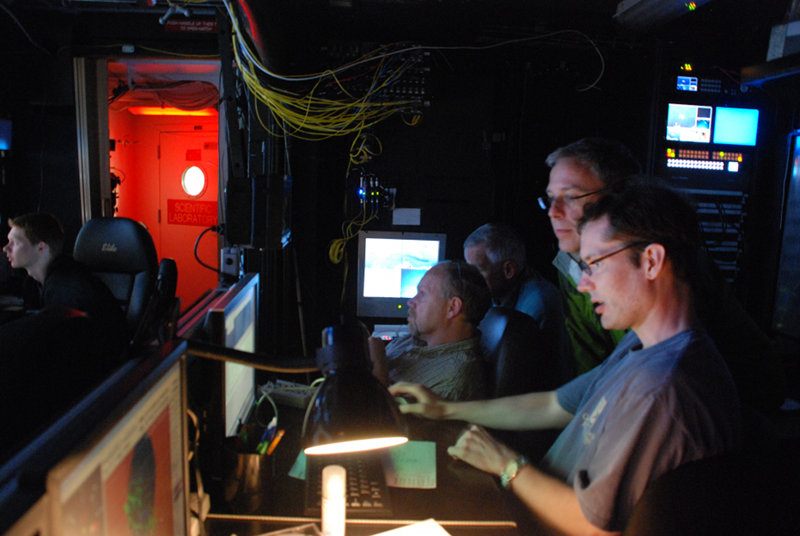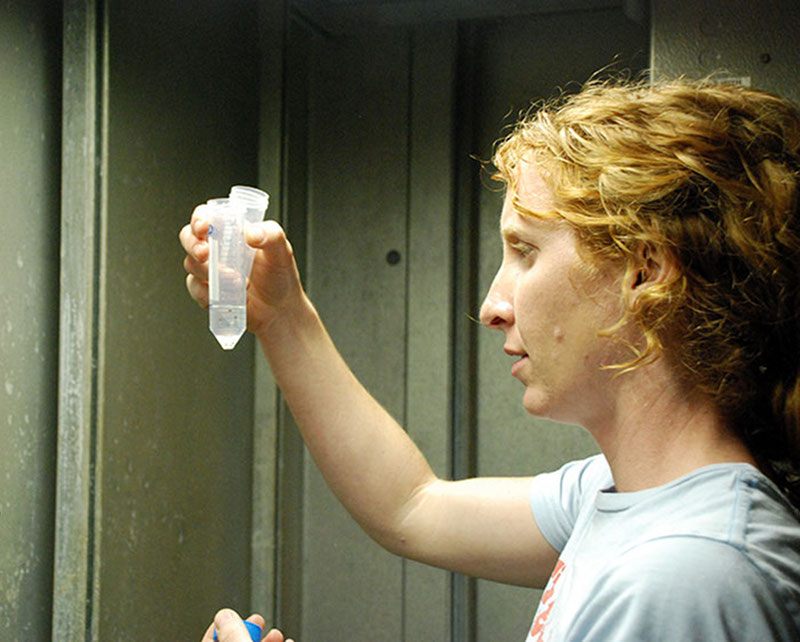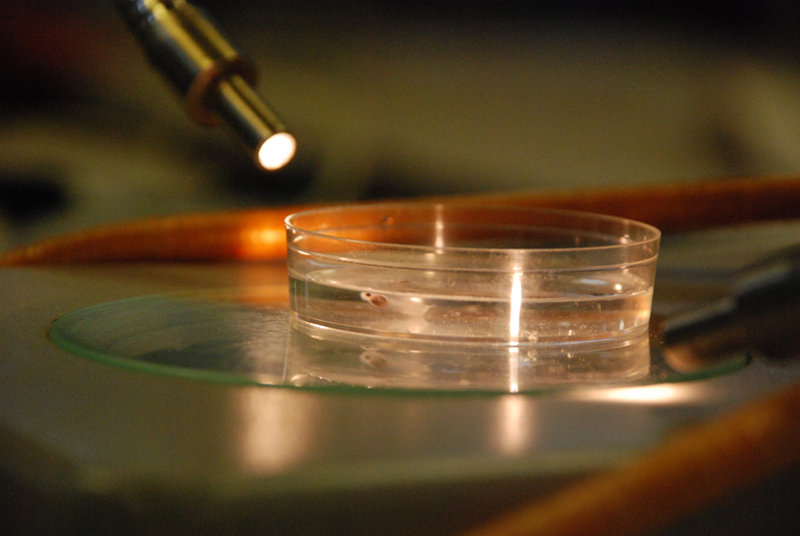
By Kasey Cantwell, Expedition Coordinator - NOAA Office of Ocean Exploration and Research
May 19, 2013

Archaeologists Jimmy Moore, Frank Cantelas, Rod Mather, and Gordon Watts conduct reconnaissance on the first shipwreck from the ROV van. Image courtesy of Deepwater Canyons 2013 - Pathways to the Abyss, NOAA-OER/BOEM/USGS. Download larger version (jpg, 5.2 MB).
Early on the morning of the May 19th, NOAA Ship Ronald H. Brown welcomed a group of 12 new scientists aboard and bid farewell to the majority of the Leg 1 team. Scientists from the U.S. Geological Survey, University of North Carolina-Wilmington, Texas A&M, and University of Louisiana stayed aboard to help with continuing and completing the biology and geology objectives.
Within a couple hours of being onboard, the new team members were given orientations to the ship and remotely operated vehicle (ROV), Jason, and steamed off towards our first ROV target. We had some excitement on board before we even reached our target site- several fish eggs that were collected on Leg 1 hatched during our transit.

Maya Watts discovers minutes-old larval fish hatched from samples collected during the first leg of the cruise. Image courtesy of Deepwater Canyons 2013 - Pathways to the Abyss, NOAA-OER/BOEM/USGS. Download larger version (jpg, 5.1 MB).
Our first dive was short, sweet, and yielded excellent archaeological data as well as a few coral samples. One of the main objectives of this dive was to familiarize new team members with how Jason operates to better maximize the next week of dives.
The primary focus of the second leg is archaeology with objectives of locating, identifying, and performing biological characterizations of underwater cultural resources, primarily shipwrecks. Additionally, we will continue fulfilling Leg 1 biology goals, such as trawling and CTD casts.
The Jason ROV is a unique tool for these objectives because of its high resolution cameras, advanced lighting system, highly skilled crew, ability to make photo mosaics, and to use its own multibeam and forward facing sonar to search for shipwrecks. Twenty-four-hour operations will continue through this leg with biology operations and multibeam mapping being accomplished at night.
The cruise is off to a great start!

Minutes-old larval fish under the microscope. Image courtesy of Deepwater Canyons 2013 - Pathways to the Abyss, NOAA-OER/BOEM/USGS. Download larger version (jpg, 5.3 MB).